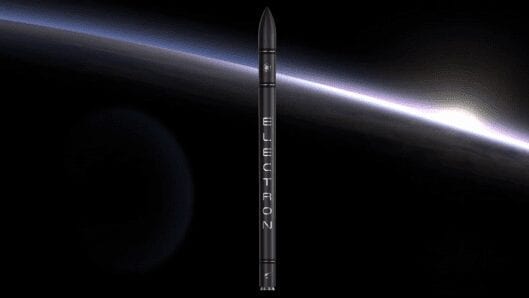
Progress on several potentially breakthrough technologies could pave the way for much cheaper, faster and easier small-satellite launches
Through its Airborne Launch Assist Space Access (ALASA) program, DARPA has been developing new concepts and architectures to get small satellites into orbit more economically on short notice. Bradford Tousley, director of DARPA’s Tactical Technology Office, provided an update on ALASA today at the 18th Annual Federal Aviation Administration (FAA)’s Commercial Space Transportation Conference in Washington, D.C. Tousley discussed several key accomplishments of the program to date, including successful completion of Phase 1 design, selection of the Boeing Company as prime contractor for Phase 2 of the program, which includes conducting 12 orbital test launches of an integrated prototype system.
“We’ve made good progress so far toward ALASA’s ambitious goal of propelling 100-pound satellites into low Earth orbit (LEO) within 24 hours of call-up, all for less than $1 million per launch,” Tousley said. “We’re moving ahead with rigorous testing of new technologies that we hope one day could enable revolutionary satellite launch systems that provide more affordable, routine and reliable access to space.”
Launches of satellites for the Department of Defense (DoD) or other government agencies require scheduling years in advance for the few available slots at the nation’s limited number of launch locations. This slow, expensive process is causing a bottleneck in placing essential space assets in orbit. The current ALASA design envisions launching a low-cost, expendable launch vehicle from conventional aircraft. Serving as a reusable first stage, the plane would fly to high altitude and release the launch vehicle, which would carry the payload to the desired location.
“ALASA seeks to overcome the limitations of current launch systems by streamlining design and manufacturing and leveraging the flexibility and re-usability of an air-launched system,” said Mitchell Burnside Clapp, DARPA program manager for ALASA. “We envision an alternative to ride-sharing for satellites that enables satellite owners to launch payloads from any location into orbits of their choosing, on schedules of their choosing, on a launch vehicle designed specifically for small payloads.”
Read more: ALASA Getting Closer to Delivering Big Things in Small Packages
The Latest on: ALASA
[google_news title=”” keyword=”ALASA” num_posts=”10″ blurb_length=”0″ show_thumb=”left”]
via Google News
The Latest on: ALASA
- Climber dies, another seriously hurt after 1,000-foot fall on Alaska peakon April 27, 2024 at 6:49 pm
A climber is dead and another is seriously injured after falling about 1,000 feet while on a steep, technical route in Alaska’s Denali National Park and Preserve.
- Reflecting on rare treasures recovered from a volcanic cave in Northwest Alaskaon April 27, 2024 at 6:38 pm
Researcher Ben Jones found working tools — several paddles and a spear with a stone tip — within the Lost Jim Lava Flow on the Seward Peninsula.
- Alaska's Indigenous teens emulate ancestors' Arctic survival skills at the Native Youth Olympicson April 27, 2024 at 5:14 pm
The Native Youth Olympics in Anchorage, Alaska, is a three-day celebration of Indigenous culture in the form of games that mimic hunting and survival techniques that Alaska Natives in the Arctic regio ...
- Climber Dead After 2-Person Team Falls 1,000 Feet Off Alaska Mountainon April 27, 2024 at 4:45 pm
The two climbers were attempting to scale Mount Johnson, an 8,400-foot peak in Denali National Park, when they fell on April 25 ...
- Climber dead, another seriously injured after 1,000-foot fall off Alaska mountainon April 27, 2024 at 4:08 pm
A 52-year-old woman died and her climbing partner was seriously injured after they fell some 1,000 feet off of a mountain in Denali National Park, officials said.
- Body of climber recovered after 1,000-foot fatal fall on Alaska peakon April 27, 2024 at 3:30 pm
Authorities say helicopter crew has recovered the body of a climber who died after falling about 1,000 feet while on a steep, technical route on Mount Johnson in Alaska’s Denali National Park and Pres ...
- Alaska Supreme Court grants significant legal protection to tribal consortium groupon April 27, 2024 at 3:03 pm
The Alaska Supreme Court on Friday extended tribal sovereign immunity to a tribal consortium, overruling a decision it made 20 years ago that refused to take a similar step. In simple terms, the ...
- Climber dead, another injured in 1,000-foot fall on Alaska's Mount Johnsonon April 27, 2024 at 2:26 pm
A mountain climber died and another was badly injured this week after falling 1,000 feet while trying to ascend Mount Johnson in Alaska's Denali National Park, park officials say. The pair were ...
- 1 climber dead, 1 climber hurt after falling 1,000 feet while climbing mountain in Alaskaon April 27, 2024 at 1:13 pm
A climber is dead and another climber is injured after a 1,000-foot fall off a mountain at Denali National Park in Alaska.
- Alaska youth celebrate Indigenous culture with Native Youth Olympicson April 27, 2024 at 12:18 pm
This weekend youth from across Alaska are participating in The Native Youth Olympics, a three-day celebration of Indigenous culture in the form of games that mimic hunting and survival techniques that ...
via Bing News










